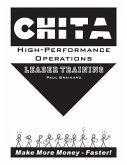Effective leadership portrays a significant part in any organization's accomplishments. The leadership position is illustrated whenever people operate in communities and is the central instrument by which a community area or substance frames and decides its needs and culture. By definition, modern initiative is a system of control, which includes a few significant capabilities like enabling, directing, organizing, and empowering the representatives. The rise of authoritative order recommends that initiative isn't really important for the structure flow but its unique value can be developed. Our world is changing continuously and a few decades back, the associations were employing chiefs and they were recruiting pioneers. Today, every supervisor is supposed not exclusively to be a powerful pioneer yet additionally a mentor and mentee. The construction industry is not an exception in this regard, especially concerning the frontline employees, i.e. supervisors and foremen. Supervisors in any construction project are expected to exert a positive influence over the daily performance of their workers. Thus, supervisory leadership is characterized as conduct planned to give direction, support, and coercive input for the day¿töday exercises of work unit individuals. This book is based on a research that aims to investigate such prevalent problems in the construction industry in India and examine the impact of supervisory leadership qualities. It presents a comprehensive strategy to identify and gauge the organizational performance (i.e. efficacy and work quality of the employees) via Employee Attitudinal Measures (EAM). Authority styles assume a significant part in deciding performance of the organization, particularly transformational and transactional leadership. Both these leadership styles are important indicators of organizational performance. More specifically, transactional leadership is seen as the accomplishment of organizational goals through a social exchange, while transformational leadership promotes the followers to explore situations differently and quickly react to these alternatives. Effective site-supervisory leadership skills in any construction industry can be a stimulus to the final business outcomes. These skills may include both attitudinal and behavioral traits, e.g. morale and organizational commitment, performance and work quality, and workplace inclusiveness and environment. This book attempts the following: 1. To study various leadership traits at the supervisory level that should be followed in a typical Indian construction company to improve its overall effectiveness. 2. To examine how supervisory leadership styles impact the employee attitudinal measures, e.g. morale, organizational commitment, performance, and work quality in the Indian construction industry. 3. To investigate deeply the level of influence and direction of the association-ship between Supervisory Leadership Practices (SLPs) and Employee Attitudinal Measures (EAMs). 4. To explore, suggest and implement an effective training program for a construction organization targeting the development of the leadership skills of supervisors in a complex working environment.








